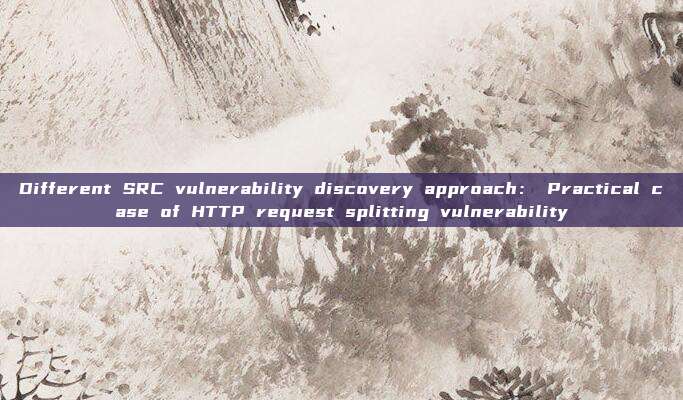Some experts say that it is impossible to find HTTP request smuggling, splitting, or web cache poisoning in China. This is because for a long time, there have been very few experts sharing practical cases of such vulnerabilities in China, and almost all practical cases come from abroad, creating a misconception that such vulnerabilities do not exist in China.
But the actual situation is not like that. In 2023, I have found many interesting vulnerabilities related to HTTP requests, and the cumulative bounty for these vulnerabilities is not less than 100,000 yuan. I can firmly say that the statement 'It is impossible to find HTTP request smuggling, splitting, or web cache poisoning in China' is not correct. Today, I will share with everyone a high-risk practical case of a domestic SRC that I dug up before: a high-risk practical case of HTTP request smuggling caused by HTTP request splitting.
I. The Beginning of the Story

One day, I found that a certain site has a request splitting vulnerability caused by CRLF injection, but after a series of explorations, I found that the upstream server is not a bucket, but a reverse proxy configured with request forwarding based on Host.
Through the results of black-box testing, I guess the architecture of the site may be similar to the following form:
client ----> reverse proxy 1 --CRLF--> reverse proxy 2 --Host--> (web server 1 | web server 2 | web server 3 | ...)
When reverse proxy 1 forwards the request to the upstream reverse proxy 2, CRLF injection occurs. After receiving the request message, reverse proxy 2 forwards the request message to the corresponding web server according to the Host request header of the request message.
For example:
Host:case.target.com ----> web server 1
Host:www.target.com ----> web server 2
Host:user.target.com ----> web server 3
...
The interesting point of this case is that the communication between reverse proxy 1 and reverse proxy 2 supports pipeline.
That is to say: Reverse proxy 1 can send multiple HTTP request messages to reverse proxy 2 at one go:
step1. Reverse proxy 1 ----> HTTP request message 1 ----> Reverse proxy 2
step2. Reverse proxy 1 ----> HTTP request message 2 ----> Reverse proxy 2
step3. Reverse proxy 1 ----> HTTP request message 3 ----> Reverse proxy 2
...
without waiting for the corresponding response message for each send:
step1. Reverse proxy 1 ----> HTTP request message 1 ----> Reverse proxy 2
step2. Reverse proxy 1 blocks and waits for the corresponding response message from reverse proxy 2
step3. Reverse proxy 1 ----> HTTP request message 2 ----> Reverse proxy 2
step4. Reverse proxy 1 blocks and waits for the corresponding response message from reverse proxy 2
...
It is precisely because of this feature that I found that when I inject HTTP request messages through CRLF injection to smuggle HTTP requests, the reverse proxy 1 seems to merge multiple response messages received from the upstream server into a single response message and return it to me:
https://case.target.cn/%20HTTP/1.1%0d%0aHost:case.target.cn%0d%0a%0d%0aPOST%20/%3fid=%20HTTP/1.1%0d%0aHost:targ
评论已关闭